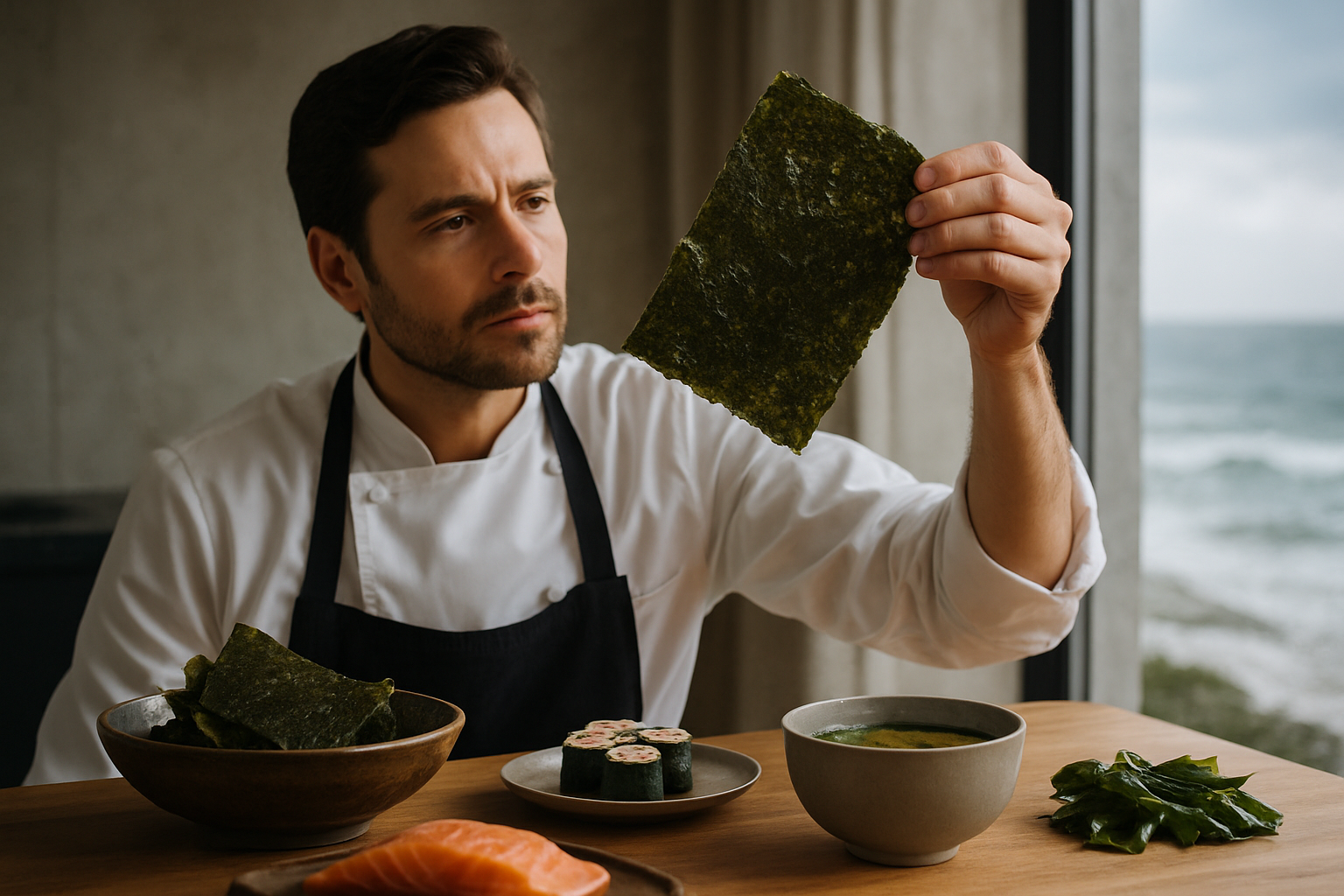Seaweed: The Ocean's Superfood Revolution
Dive into the depths of culinary innovation with seaweed, the underwater treasure transforming kitchens worldwide. From gourmet restaurants to home cooking, this versatile ingredient is making waves in the food scene. Discover how this nutrient-packed, sustainable superfood is revolutionizing dishes and offering a taste of the sea in unexpected ways.

Seaweed Varieties: A Taste of the Ocean’s Diversity
The world of seaweed is vast and varied, with each type offering its own unique flavor and texture. Nori, the dark sheets used in sushi, has a delicate, slightly sweet taste. Wakame, often found in miso soup, has a silky texture and mild flavor. Dulse, a red seaweed, has a surprisingly bacon-like taste when fried. Kombu, a key ingredient in dashi broth, imparts a rich umami flavor to dishes. Sea lettuce, with its vibrant green color, adds a crisp, salty bite to salads. Exploring these varieties opens up a world of culinary possibilities, from Japanese-inspired dishes to innovative fusion creations. Chefs are experimenting with lesser-known varieties like sea grapes (also known as green caviar) and Irish moss, pushing the boundaries of seaweed’s culinary applications. By incorporating different seaweeds into their cooking, home cooks can bring the essence of the ocean to their tables, creating dishes that are both visually striking and full of complex flavors.
Nutritional Powerhouse: The Health Benefits of Seaweed
Seaweed is not just a flavorful ingredient; it’s a nutritional powerhouse packed with essential vitamins and minerals. Rich in iodine, seaweed supports thyroid function and metabolic health. It’s an excellent source of vitamin B12, making it particularly valuable for vegetarians and vegans. Seaweed also contains high levels of iron, calcium, and magnesium, contributing to overall bone and muscle health. The fiber content in seaweed aids digestion and promotes gut health, while its antioxidants help combat inflammation and oxidative stress. Some varieties of seaweed are rich in omega-3 fatty acids, offering a plant-based alternative to fish oils. Additionally, the unique compounds found in seaweed, such as fucoidan and alginate, have been studied for their potential anti-cancer and weight management properties. As more research emerges on the health benefits of seaweed, it’s becoming clear that this sea vegetable is not just a trendy ingredient but a valuable addition to a balanced diet.
Sustainable Harvesting: Seaweed Farming for the Future
As demand for seaweed grows, sustainable harvesting practices are crucial to protect marine ecosystems. Seaweed farming has emerged as an eco-friendly alternative to wild harvesting, offering numerous environmental benefits. Unlike land-based agriculture, seaweed cultivation requires no freshwater, fertilizers, or pesticides. It grows rapidly, absorbing carbon dioxide and excess nutrients from the water, helping to mitigate ocean acidification and improve water quality. Seaweed farms also provide habitat for marine life, supporting biodiversity. Coastal communities around the world are embracing seaweed farming as a sustainable source of income and food security. From small-scale operations in Maine to large underwater forests off the coast of South Korea, seaweed aquaculture is revolutionizing the way we think about sustainable food production. As consumers become more environmentally conscious, choosing seaweed products from responsibly managed farms can contribute to healthier oceans and support local economies.
Seaweed in the Kitchen: Creative Culinary Applications
Incorporating seaweed into everyday cooking is easier than you might think. Beyond its traditional uses in Asian cuisine, seaweed is finding its way into a variety of dishes. Dried seaweed flakes can be sprinkled over popcorn or roasted vegetables for a savory umami boost. Kelp noodles offer a low-carb alternative to pasta, perfect for cold salads or stir-fries. Seaweed butter, made by blending dried seaweed into softened butter, adds a unique flavor to grilled fish or steamed vegetables. Innovative chefs are even using seaweed as a natural food coloring, creating vibrant green pasta or adding a pop of color to cocktails. In baking, ground seaweed can be incorporated into bread doughs for added nutrition and a subtle briny flavor. Seaweed snacks, from crispy nori chips to seasoned seaweed strips, are becoming popular alternatives to traditional potato chips. By experimenting with different forms of seaweed in the kitchen, home cooks can elevate their dishes with new textures, flavors, and nutritional benefits.
Seaweed Sensations: Tips for Culinary Exploration
-
Start with familiar forms like nori sheets or wakame in soups before experimenting with more exotic varieties
-
Rehydrate dried seaweed in warm water before using in salads or as a garnish
-
Use seaweed as a natural salt substitute to reduce sodium intake while adding flavor
-
Try seaweed-infused oils for a quick and easy way to incorporate ocean flavors into dressings and marinades
-
Experiment with seaweed in smoothies for a nutrient boost – start with small amounts and adjust to taste
-
Look for seaweed-based seasonings like furikake to add instant umami to rice dishes or roasted vegetables
-
Consider using seaweed as a wrap for fish or vegetables when grilling or steaming
In conclusion, seaweed is more than just a trend; it’s a culinary revolution with the potential to transform our diets and our planet. From its rich nutritional profile to its sustainable cultivation, seaweed offers a wealth of benefits for both consumers and the environment. As we continue to explore the depths of this ocean superfood, we open ourselves to a world of flavors, textures, and culinary possibilities. Embrace the seaweed revolution in your kitchen and discover the delicious potential of this underwater treasure.





